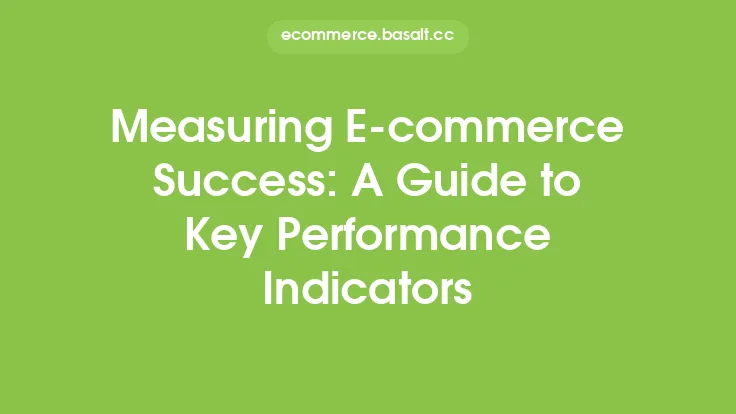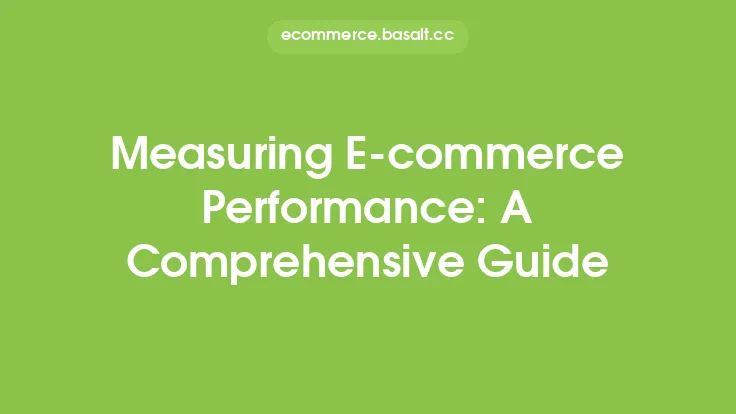In the world of e-commerce, content marketing has become an essential tool for businesses to reach and engage with their target audience. With the rise of digital marketing, e-commerce companies are now able to create and distribute valuable, relevant, and consistent content to attract and retain a clearly defined audience. However, creating effective content is only half the battle. To truly maximize the potential of e-commerce content marketing, businesses must also be able to measure and optimize its performance.
Understanding Key Performance Indicators (KPIs)
To measure the performance of e-commerce content marketing, businesses must first identify the key performance indicators (KPIs) that matter most to their goals. These KPIs may include metrics such as website traffic, engagement rates, conversion rates, and return on investment (ROI). By tracking these KPIs, businesses can gain a deeper understanding of how their content is performing and make data-driven decisions to optimize its effectiveness.
Setting Up Analytics Tools
To track KPIs, businesses must set up analytics tools that can provide insights into their content's performance. Google Analytics is a popular choice for e-commerce businesses, as it provides a wealth of information on website traffic, behavior, and conversion rates. Additionally, social media analytics tools such as Hootsuite or Sprout Social can provide insights into engagement rates and other social media metrics. By setting up these analytics tools, businesses can gain a clear understanding of their content's performance and make informed decisions to optimize its effectiveness.
Conducting Regular Audits
Regular audits are essential to measuring and optimizing the performance of e-commerce content marketing. These audits should include a review of KPIs, as well as an analysis of the content itself. Businesses should ask themselves questions such as: Is our content aligned with our target audience's needs and interests? Is our content optimized for search engines? Are we using the most effective channels to distribute our content? By conducting regular audits, businesses can identify areas for improvement and make data-driven decisions to optimize their content marketing strategy.
A/B Testing and Experimentation
A/B testing and experimentation are crucial to optimizing the performance of e-commerce content marketing. By testing different versions of content, businesses can determine which elements are most effective in driving engagement, conversions, and sales. This may include testing different headlines, images, calls-to-action, or even entire content formats. By experimenting with different approaches, businesses can refine their content marketing strategy and maximize its potential.
Refining the Content Marketing Strategy
Based on the insights gained from measuring and analyzing performance, businesses can refine their content marketing strategy to better achieve their goals. This may involve adjusting the types of content created, the channels used to distribute it, or the frequency of publication. By continually refining their strategy, businesses can ensure that their content marketing efforts are aligned with their target audience's needs and interests, and that they are maximizing their return on investment.
Staying Up-to-Date with Industry Trends
Finally, to truly maximize the potential of e-commerce content marketing, businesses must stay up-to-date with the latest industry trends and best practices. This may involve attending conferences and workshops, reading industry blogs and publications, or participating in online communities and forums. By staying informed about the latest developments in content marketing, businesses can stay ahead of the curve and ensure that their content marketing strategy is always optimized for maximum effectiveness.
Leveraging Data to Inform Content Decisions
Data should be at the heart of every content decision. By leveraging data and analytics, businesses can gain a deeper understanding of their target audience's needs and interests, and create content that resonates with them. This may involve using data to inform content topics, formats, and channels, as well as to measure the effectiveness of content marketing efforts. By using data to inform content decisions, businesses can ensure that their content marketing strategy is always aligned with their target audience's needs and interests.
Creating a Culture of Continuous Improvement
To truly maximize the potential of e-commerce content marketing, businesses must create a culture of continuous improvement. This involves continually measuring and analyzing performance, refining the content marketing strategy, and staying up-to-date with the latest industry trends and best practices. By fostering a culture of continuous improvement, businesses can ensure that their content marketing efforts are always optimized for maximum effectiveness, and that they are continually driving engagement, conversions, and sales.





